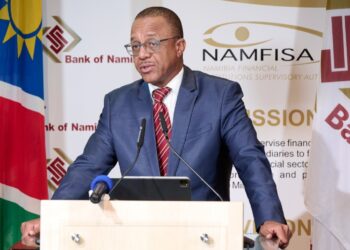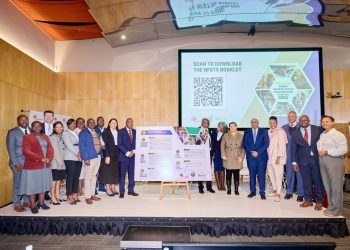
The South African Reserve Bank’s (SARB’s) Monetary Policy Committee has voted to hike rates in South Africa by a further 75 basis points, taking the repo rate to 7.00%. The prime lending rate has now increased to 10.50%.
SARB governor Lesetja Kganyago made the announcement on Thursday (24 November) following the MPC’s final meeting for the year. The level of the repurchase rate is now above the level prevailing before the start of the pandemic.
The vote to hike rates at 75bp was not unanimous, with three members voting for the given hike versus two who preferred a 50bp hike.
The latest rate hike marks the eighth hike in the current cycle, with the total adjustment being 350 basis points since the hike cycle started a year ago in November 2021.
Kganyago said that the hike comes amid high levels of inflation in South Africa and a volatile global economic outlook for the year ahead. South Africa’s economic growth prospects look weak, he said, mainly due to high levels of load shedding.
“High inflation and weak economic growth continue to shape global conditions alongside monetary and fiscal policy responses. Russia’s war in Ukraine drags on, impairing trade and raising prices of a wide range of energy, food and other commodities.
“Growth in the United States is set to weaken, and remains low in China. Although energy constraints have eased somewhat in the Euro Area, recession risk is high. Additionally, a number of developing economies face debt distress, exacerbated by tighter global financial conditions,†he said.
Taking these and other factors into account, the SARB’s forecast for global growth in 2023 is revised lower to 1.9% (from 2.0%), while South Africa is expected to grow by 1.8% (from 1.9%) this year.
The economy is forecast to expand by 1.1% in 2023 (from 1.4%) and by 1.4% in 2024 (from 1.7%), below previous projections. GDP growth of 1.5% is forecast for 2025.
The governor said that the central bank expects inflation to be higher for longer, with food price inflation revised upwards to 8.8% in 2022 and 6.2% in 2023, only returning to within the target range at 4.2% in 2024.
While global oil prices have helped ease fuel price inflation locally, electricity inflation remains high at 10% for 2022.-bustech
“Even though South Africa’s fuel price inflation for the year remains exceedingly high, some easing of global oil prices has led to forecast revisions in the last few MPC meetings. Fuel price inflation for this year is now forecast at 33.3% (down from 33.5%), falling to 0.8% in 2023 (down from 1.1%).
“Local electricity price inflation is slightly higher at 10.7% in 2022, 9.0% in 2023, and is unchanged at 10% in 2024,†he said.
Risks to the inflation outlook remain high, Kganyago said, with the Russia-Ukraine war remaining an ever-present factor. The Bank’s forecast of headline inflation for this year and next is slightly higher at 6.7% and 5.4%, respectively. In 2024 and 2025, it expects headline inflation of 4.5%.
“Despite easing of global producer price and food inflation, Russia’s war in Ukraine continues, with adverse effects on global prices generally. The oil market is expected to remain tight, with upside risk to prices.
“Electricity and other administered prices continue to present clear medium-term risks. Given low public sector wage assumptions and high petrol and food price inflation, considerable risk still attaches to the forecast for average salaries,†he said.
The rate hike was in line with expectations from economists and analysts this week, which predicted a hike of between 50bp and 75bp, with very few outliers expecting a 100bp hike.
“The revised repurchase rate remains supportive of credit demand in the near term, while raising rates to levels more consistent with the current view of inflation and risks to it,†Kganyago said.
“Economic and financial conditions are expected to remain more volatile for the foreseeable future. In this uncertain environment, monetary policy decisions will continue to be data dependent and sensitive to the balance of risks to the outlook.â€











